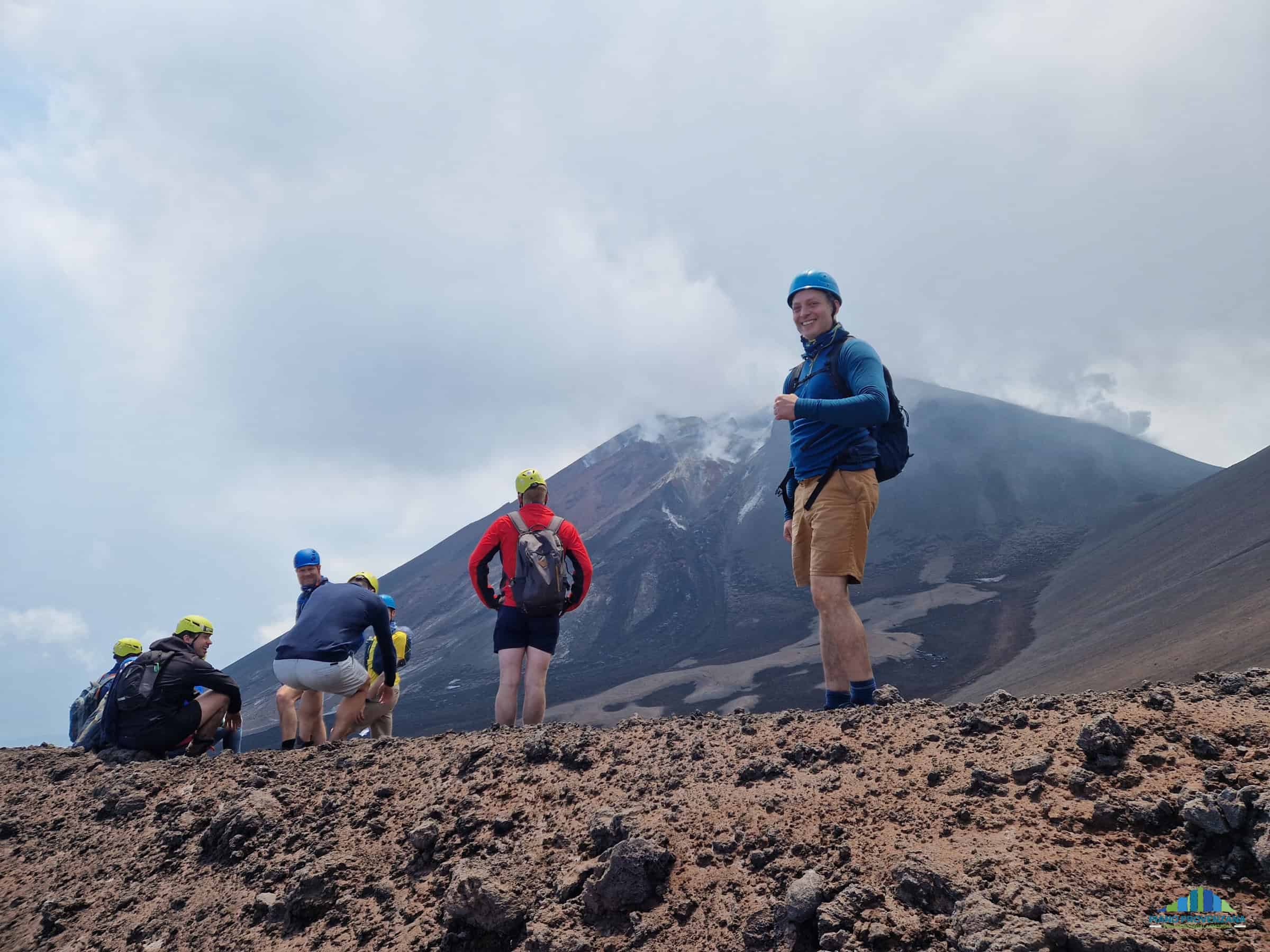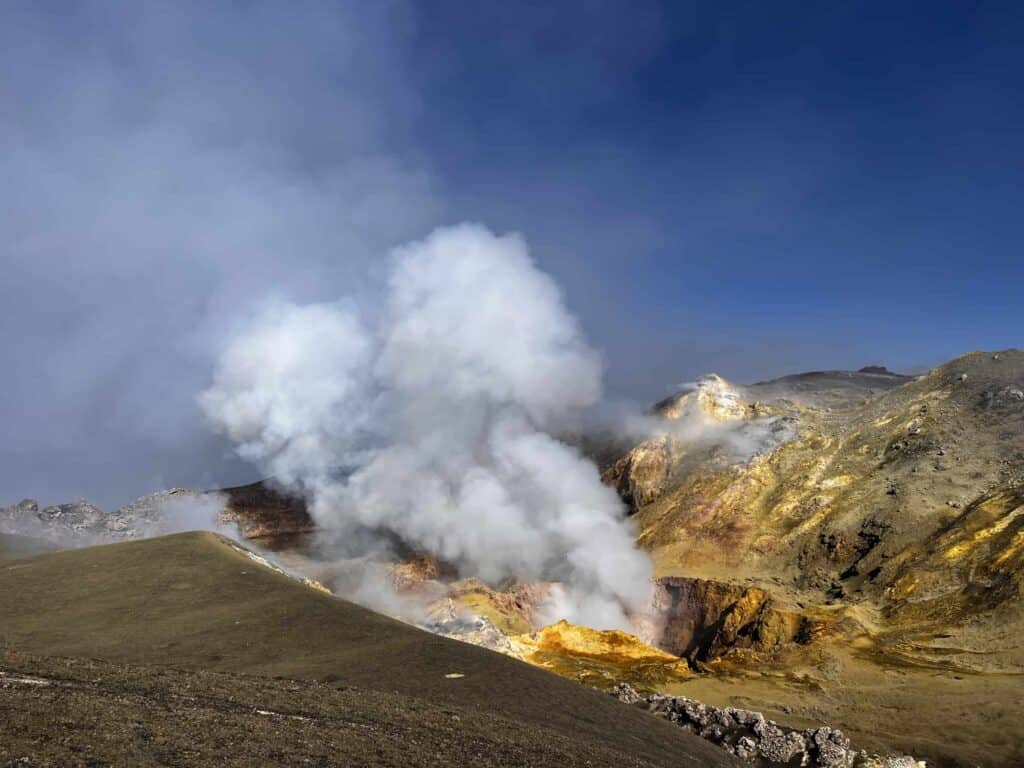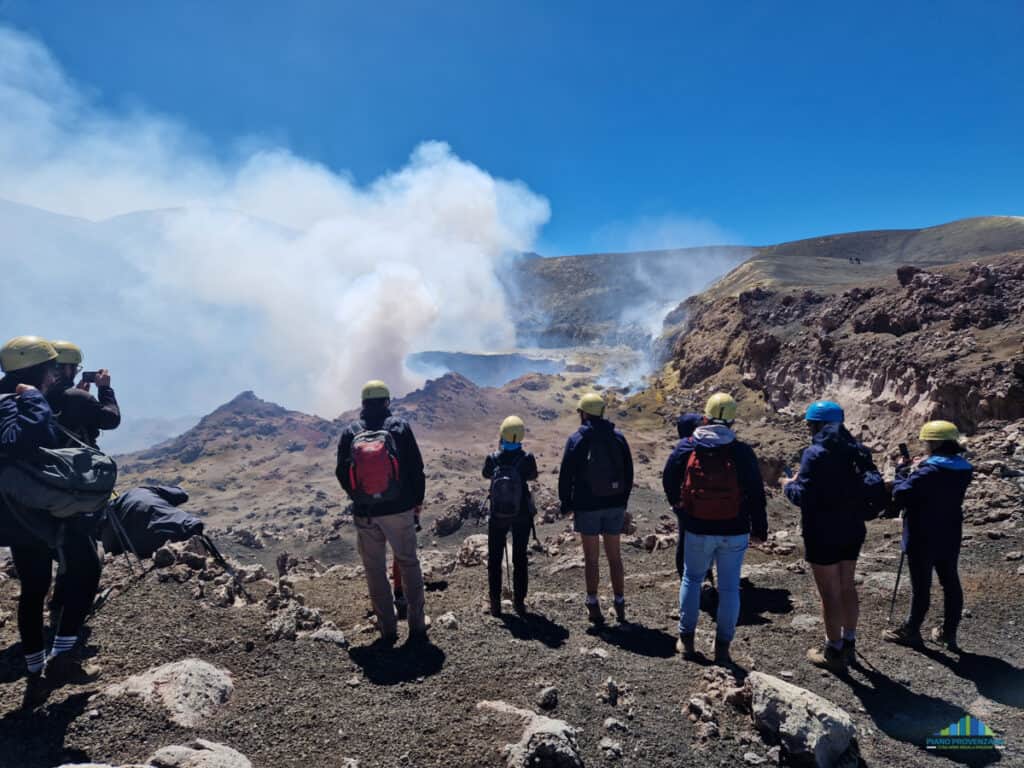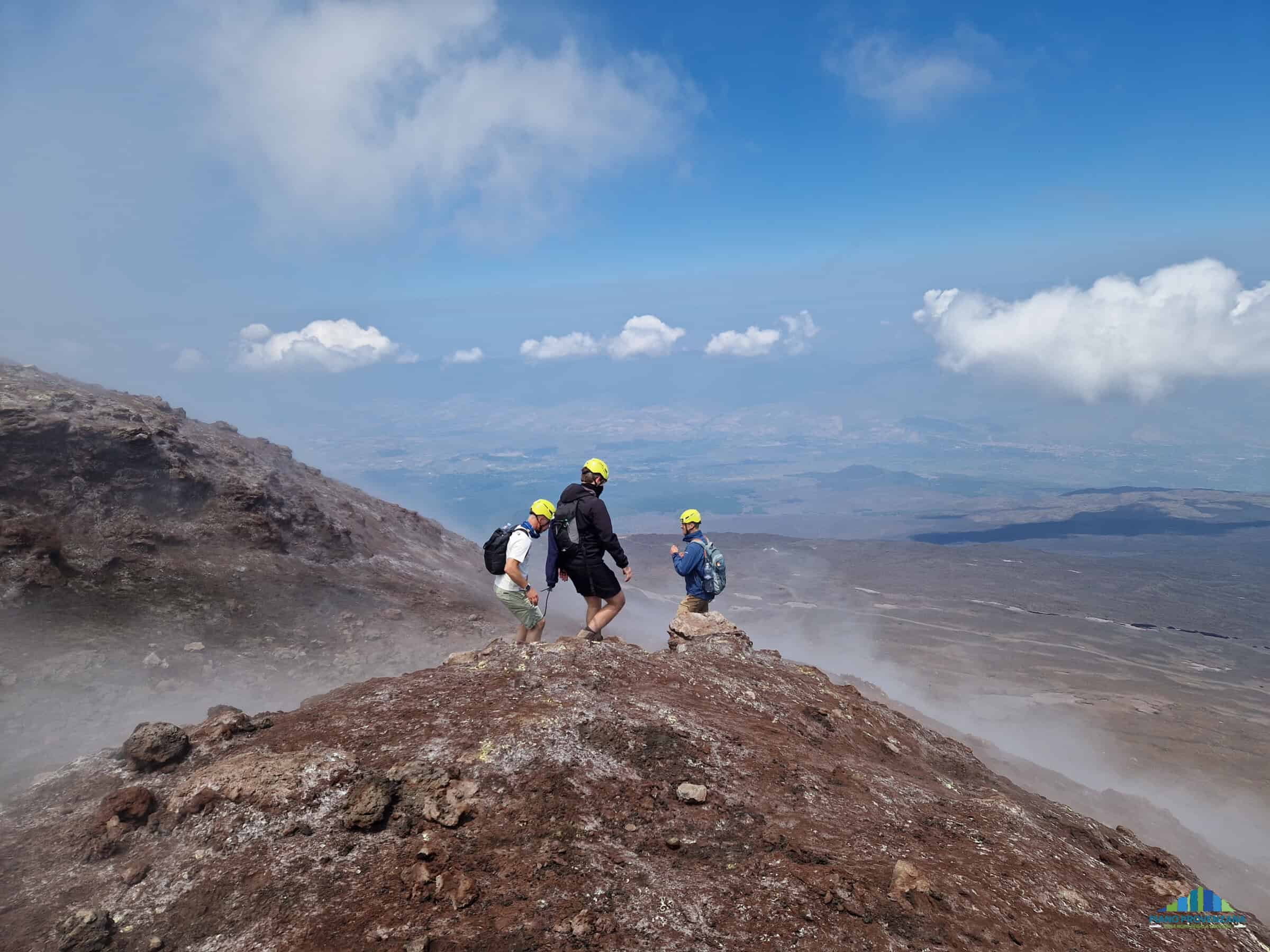

The summit of Mount Etna is not a fixed point but a dynamic volcanic area that constantly changes. Eruptions create, expand, and reshape craters — meaning the height of the summit continually varies.
The active craters of the Etna volcano are found only in the summit part, and represent the central part of the volcanic activity. At present, the highest point of Mount Etna lies at an altitude of approximately 3,407 meters, near the active South-East Crater (Cratere Sud-Est).
Alongside this crater, there are three other active summit craters, meaning that Etna currently has four active summit craters in total (some of which feature multiple vents releasing gas):
There is therefore no single fixed summit on Mount Etna. Instead, the top consists of a complex of four active craters that continuously grow, collapse, and reform over time. Together, these craters form the beating heart of the volcano.
In the summit part of Etna we assist to the persistent fumarolic activity, and at more or less regular time intervals to explosive events of various forms such as: strombolian activities, lava fountains, expulsion of duct obstructions, freatic activities, these participate to the continuous modifications of the morphology of the summit area.
North-East Crater
The North-East Crater was formed in 1911 at an altitude of around 3,100 meters. It grew steadily until 1950, when part of the crater collapsed.
The crater has a circumference of about 800 meters, and over time its height has continued to increase. In 1973, it reached 3,290 meters, and by 1978, it had grown to 3,345 meters — which is currently considered the highest point of Mount Etna. The rim of the crater is now heavily eroded due to many years of inactivity.
A significant eruption occurred in 1955, producing a lava flow that lasted nine years, until 1964. Another powerful eruption took place in 1986, when a massive ash plume rose above the volcano like a mushroom cloud.
The structure of the North-East Crater is particularly complex, as it was formed through multiple overlapping eruptive phases. The last eruption of the North-East Crater occurred in 2013.
Voragine Crater
The Voragine Crater was formed in October 1945 and is often nicknamed the “pit crater” because of its explosive eruptions. Its last major eruption occurred on September 4, 1999, after which the crater remained quiet until it reawakened in 2013. The most recent eruption took place in July 2024.
Bocca Nuova
The Bocca Nuova Crater was formed in May 1968. Initially, it measured only about 8 meters across, but by 1983 it had expanded to around 330 meters. Since 1997, Bocca Nuova has frequently reactivated, and both this crater and the nearby Voragine Crater have often been filled with solidified lava and rock.
The ridge separating the two craters collapsed between 1998 and 1999 due to a series of eruptions from Voragine, and again following later eruptions in 2006, 2011–2012, and 2013, driven by increased volcanic activity from the Strombolian vents. The most recent eruption of Bocca Nuova occurred in 2013.


The summit area of Mount Etna — the zone where the active main craters are located — covers approximately 1.5 to 2 km². It’s a rugged, lunar-like landscape made up of solidified lava, volcanic rock, sulphur vents, and ever-changing fissures. On average, the summit complex spans over 1 km in width, with more than 100 meters of elevation difference between the various craters.
The volcano itself, however, is much larger. Mount Etna has a diameter of about 40–45 kilometers, and the entire Etna area covers around 1,200 km². To put that into perspective, the volcano is roughly the same size as:
This makes Mount Etna the largest active volcano in Europe.
For visitors, the “summit of Mount Etna” usually refers to the highest point accessible during excursions. The exact altitude varies depending on volcanic activity and any safety restrictions in place.
During periods of low volcanic activity, it’s possible — with a certified volcano guide — to reach the true summit area at around 3,400 meters, where you can actually walk along the rim of some of Etna’s active summit craters.
During periods of increased volcanic activity, access is restricted to lower altitudes. The exact limit depends on the intensity of the activity and which summit crater is erupting at the time. Safety always comes first — restrictions are in place to ensure the protection of both visitors and guides.
De activiteit van de vulkaan wordt continu – dag en nacht – gevolgd door het INGV, het Italiaanse instituut voor geofysica en vulkanologie. Met sensoren, satellieten en camera’s houden zij elk seintje van de Etna in de gaten: van lichte trillingen tot stijgende lavatemperaturen.
Zodra de vulkaan actiever wordt, past het INGV direct het waarschuwingsniveau aan – en daarop worden ook de toegangsregels voor excursies afgestemd. Enkel officiële erkende vulkaangidsen staan in direct contact met het INGV. Dat is ook precies de reden waarom je dus enkel en alleen met een erkende officiële vulkaangids naar de top moet (en mag) gaan!




What is it really like to stand on the summit of an active volcano? Is it worth it? Is it scary? These are questions I (Anniek) often hear — and the truth is, at the top of Mount Etna, you can literally feel the breath of the Earth. The air carries the scent of sulphur, and at times, the ground beneath your feet feels warm. You watch plumes of gas rise and sense the wind shift — and suddenly, you realize you’re not standing on an ordinary mountain, but on a living being made of fire and stone.
It’s more than a place — it’s an experience. An experience that connects you deeply with nature, a moment of raw power where you become one with the Earth itself. You feel awe, humility, and wonder. Climbing to the summit of Mount Etna doesn’t just take you higher, it brings you closer to the primal force of our planet.
You can visit Mount Etna from two main sides: the northern slope (Piano Provenzana) and the southern slope (Rifugio Sapienza). Depending on volcanic activity and any safety restrictions, access to the summit may be possible from one side, both, or sometimes neither — and these conditions can change daily.
First and foremost, if you want to reach the true summit of Mount Etna, you need to be in good physical condition. The higher you go, the less oxygen there is in the air — for example, at 2,900 meters, there is already about 10% less oxygen compared to the starting altitude of 1,800–1,900 meters.
By cable car and/or 4×4 vehicle, you can reach up to around 2,800–2,900 meters. From there, if you wish to reach the actual summit, you must continue on foot.
⚠️ Important: you are not allowed to hike to the summit on your own.
Access beyond certain altitudes is permitted only under the supervision of a certified volcano guide.
Reaching the true summit of Mount Etna means covering at least 500 meters of elevation gain on foot, which takes around 2 to 2.5 hours, depending on the weather, trail conditions, and group pace. The combination of high altitude and continuous ascent makes this excursion suitable only for those in strong physical and mental condition.
You can learn more about the summit excursions from Etna North (Piano Provenzana) here:
Prefer visiting from Etna South?
At the moment, from the southern side you can reach up to 3,000 meters (not the true summit):